- All UK Webcams
- All Canada Webcams
- All of Italy Webcams
- Sign in / Join


British Virgin Islands
Cayman islands, czech republic, dominican republic, el salvador, french polynesia, netherlands, new zealand, philippines, puerto rico, south africa, switzerland, turks and caicos.
- United Kingdom
United States
U.s. virgin islands, amusement parks, artificial intelligence, barbershops, cruise ships, ports & harbors, resorts & hotels, myrtle beach, railways & trains, ski resorts, street cameras, connecticut, massachusetts, mississippi, new hampshire, north carolina, north dakota, pennsylvania, rhode island, south carolina, south dakota, washington dc, west virginia.
- Harbor Cams
- Live Webcams
- Live Stream
Barmouth Webcam, The Quay

Live Barmouth Webcam
Watch this live HD webcam in Barmouth, Wales, United Kingdom from Merioneth Yacht Club . The Welsh town of Barmouth has one of the best set ups of any holiday resort in the UK. It has some of the best beaches in Britain, and sits on an estuary with exceptional views of the Snowdonia National Park. Keep an eye on the waves and tide times !
Things To Do: Barmouth Beach, Barmouth Bridge, Panorama Walk, Barmouth Harbour, Old Barmouth, Taith Ardudwy Way, Barmouth Slabs, Barmouth Heritage Trail. View all of the activities, main attractions, and things to do on TripAdvisor .
Weather in Barmouth
In addition to the fun, keep an eye on the current weather conditions in Barmouth. Furthermore, take a look at the 7-day forecast above, which includes precipitation and the temperature highs and lows. Also, Below is the weather radar with interactive map, allowing you to zoom and pan to get unmatched weather details!
Hotels in Barmouth
Find nice hotels to stay at when on vacation in Barmouth. Some of the best in the area are: The Tilman, Bae Abermaw, Tal Y Don Hotel, Lawrenny Lodge, Hendre Coed Isaf, Barmouth Bay Holiday Park, Endeavour Guest House, Endeavour Guest House, Min-y-mor Hotel, Ty’r Graig Castle. View all of the nice hotels to stay at in Barmouth on TripAdvisor .
Restaurants Barmouth
Enjoy the best restaurants in Barmouth. The most popular place to eat amongst locals and tourists are: Celtic Cabin, Bistro Bermo, The Bank Restaurant, The Bay Restaurant, The Tilman, Myrddins Brewery & Distillery, Foxglove, The Captain’s Table, Norbar, The Last Inn. View all the restaurants in the area on TripAdvisor .
Live beach webcams, weather conditions and surf report for your favorite beaches, vacation destinations and tourist attractions in the UK.
L ive Beach Cam brings you webcams from around the world. Keep up with the weather and maps from the best beaches around the world. Planning a vacation? This is the place you need to be. Furthermore you get to see these incredible beaches and landmarks around the world.
In addition to the best cams and webcams in United Kingdom, Live Beach Cam brings you sites from all around the world. Find out weather conditions, forecast and updates from the top beaches in the world. Check out drone camera video for the top tourist attractions around the world. Also, look at deck and pier webcams from the top beaches and vacation destinations in the world. Find hotels in the area prior to beginning your adventure.
Check out beach waves, surf conditions, tides, and storm news by looking at the maps of the beaches. Also, live beach cam has the best beach video from around the world.
Why Live Beach?
Do you love taking vacations and sight seeing throughout the world? Well this is the place for you. Furthermore, we will have live Streams and live cams of beaches, trains, mountains, volcanoes and theme parks. Also, We also have the best boardwalks, harbor cams, and other popular tourist attractions around the world. Make sure you check the weather forecast before planning your expedition.
Also, Live Beach Cam features the top web cams from around the world to bring you streams of the day to day happenings of the most amazing places in the world. Don’t miss day to day, hour to hour, minute to minute coverage of the most popular places on the planet.
RELATED ARTICLES MORE FROM AUTHOR
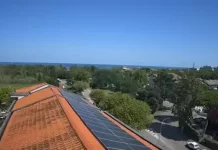
Lido di Adriano Live Webcam

Pecetto di Valenza Video

Saipan Micro Beach Northern Mariana Islands

Putnam County Commission Video
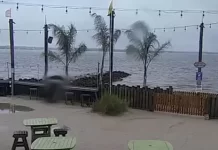
Paradise Grill

Pentwater Webcam Michigan | Pickleball Courts | Live Video

Amersfoort Centraal Station Railcam | Live Webcam Video
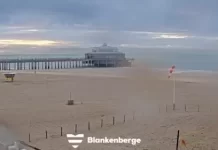
Blankenberge Beach Webcam | Belgium | HD Live Video

Virginia Tech’s Campus Video

Lake Cherokee Texas

Jamaica Flat Bridge | Rio Cobre River | Live Cam Video

North Point Park Sheboygan
United kingdom webcams.
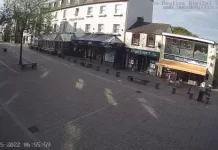
Keswick Webcam | Cumbria, England United Kingdom | Live Video

Weymouth Harbour Webcam – Dorset, England

Cappagh Parish Webcam

Isles of Scilly Webcam | Fraggle Rock Harbour View


Langland Bay Webcam | Wales
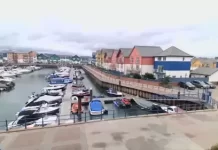
Webcams in Devon, England | Live HD Video

Clevedon Webcam | England | UK

Penybanc Ammanford Live Webcam – Wales UK

Llandudno Webcam | North Parade

London Underground Live HD Webcam England NEW

Sandown Esplanade Live Webcam Isle of Wight, UK

Old Harbour Live Stream Cam in England new

Wembley Stadium Webcam | London, UK

York Railway Live Stream Cam England

Bournemouth Webcam

Webcam Porthcawl Pier Live Video – United Kingdom

The Sloop Webcam | St Ives Harbour
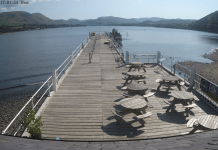
Webcam Cumbria
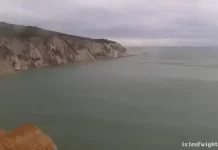
The Needles Live Webcam Isle of Wight, England

Buckingham Palace Webcam
Webcampedia Home
The internet's webcam encyclopedia.
Webcampedia > Webcam Details
Cardigan Bay

Three changing webcam views from Merioneth Yacht Club of the River Mawddach estuary and Cardigan Bay.
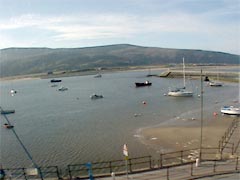
Got a webcam like this one? - add it today!
Webcam of the Week

- By Location
- Controllable
- New Webcams
- Last Viewed
- Add a webcam
- Edit your cam
© Webcampedia.com - The Internet's webcam encyclopedia | Contact | Site Map | Privacy Policy |

Weather & Webcams
- MHYC Channel Cam
- Fairport Harbor Lakefront Beach Camera
- Graphical Forecast
- Nearshore Marine Forecast
- Complete Forecast via Accuweather.com
- Weather Underground
- Lake Erie Marine Weather
- Fairport Harbor Lighthouse Observations
- Observations at Cleveland Crib
- Observations at Geneva State Park
- Observations at South Bass Island
- Put-In-Bay Webcams
Vermilion Yacht Club
5440 Anchorage Way
Vermilion, OH 44089
440.967.3255
A live webcam is installed at the front of the club allowing a view of the river and lake. The webcam is experimental and will be changing view, location, and technology through the spring of 2021. A link to the camera can be found here:
Vermilion Yacht Club Webcam
The virtual location of the camera will also be changing frequently. If your browser loses the location, the most recent virtual location can be found at the above link.

For information on where to stay and great places to eat in Barmouth..... Click Here!
Rowing Section Covid Policy

Club Events

Three Peaks Yacht Race
Sat 9th July 2022
Merioneth Yacht Club has a members bar that overlooks the harbour and has spectacular views of the Barmouth Bridge. We hold a number of social events throughout the year.
In general, sporting activities are for members only, although we do have taster sessions. Please contact us if you are interested.
We welcome visitors to most of our social events. There may be a £1 charge for non-members.
Regular Watersports Events
Between 2nd June and 20th October - Paddle Section meet for kayaking and canoeing. Meet up time is generally 5.30pm with a variety of locations based around the Barmouth and Porthmadog area.
2021 Watersports Events
Saturday 19th June - Three Peaks Yacht Race
Friday 30th and Saturday 31st July 7pm-11pm - Bar Open
Saturday 31st July & Sunday 1st August - Dinghy Race Weekend
2022 Watersports Events
Saturday 9th July - Three Peaks Yacht Race
2021 Social Events and Meetings
As well as operating the club bar every Tuesday and Friday between 7pm - 11pm we also have;
Friday 3rd September - Open Meeting on Dinghy Sailing - Club bar from 7pm
Saturday 18th September - Compound Clean Up Day and BBQ - from 10am
Saturday 9th October - AGM
Saturday 23rd October - Italian Evening from 7pm
Saturday 20th November - Indian Evening from 7pm
Friday 3rd December - Wine Tasting Evening
Saturday 11th December - Xmas Dinner
We hold a number of theory and practical courses throughout the year. To see our available courses please look here

- Europe 6422
- Austria 613
- Germany 1586
- Northern Ireland
- Poland 2721
- North America 430
- British Columbia
- New Brunswick
- Newfoundland And Labrador
- Northwest Territories
- Nova Scotia
- Prince Edward Island
- Saskatchewan
- Connecticut
- District of Columbia
- Massachusetts
- Mississippi
- New Hampshire
- North Carolina
- North Dakota
- Pennsylvania
- Rhode Island
- South Carolina
- South Dakota
- West Virginia
- South America 482
- Australia & Oceania 737
- Random camera ?
- Animals 307
- Ski resorts 477

| Views | 456 |
| Region | Great Britain / Wales |
| Temperature | 19.8°C (67.7°F) |
| Time | 2024-07-25 11:20:13 (BST) |
| Coordinates | 52°38'28.7'' N / -3°43'1.4'' W |
| Source | https://www.farsondigitalwatercams.com/ |
| Refresh | Refresh over 5 seconds |
- Nearby cams
- Wikipedia articles

- HOT cameras
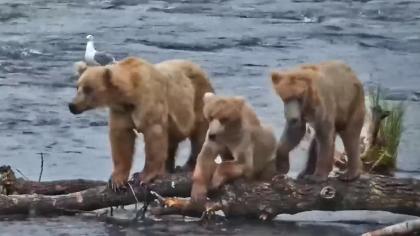
Wales Web camera
Can you guess where this camera is from?

- New Zealand
- Current weather

Is it worthwhile to add a live IP camera into your blog such as Wales webcam?
The installation of a live cam on your own internet site is going to be an amazing option to advertise your business and its features. It is not important if it is a business site of a sea side destination, a city service, an internet site of a restaurant or maybe a ski lift, or a site aimed at the tourism industry. A live website cam view will unquestionably have a favorable impact on the traffic on your website. In addition, the view from a live ip camera , for instance Wales :
- adds to the content on the site and additionally allows the reception of the message;
- captures visitors from a number of regions as well as improves the possibility of finding you on the Internet;
- holds prospective customers on your site;
- strengthens the trust of website visitors in the viewed destination and even boosts its fame;
- it assists the promotion activities of tourism together with restaurant firms - a live webcam might be an exceptional addition to the internet site of a facility for rent, ski resort, swimming pool, museum, zoo, botanical garden and a lot of other exciting facilities;
- facilitates to check quickly plenty of necessary info for visitors, for instance weather condition, vehicle parking condition and even traffic in a particular place;
- facilitates earning backlinks to your site - back-links leading to your site from various places, which generally can mean more beneficial building of the position in Google;
- can have educational significance if you intend to display different kinds of tourist attractions, e.g. nests of endangered species, breeding units, bodies of water, parks, and many others.
You are able to shoot whatever you want. You are basically confined solely by your will or... GDPR regulations. It's easy to setup a live cam on your own internet site.
Ljubek (2021-12-25 09:45:15)
Pyrrhos (2021-04-10 09:45:15).

IMAGES
VIDEO
COMMENTS
Web Cams. Our History. More... Use tab to navigate through the menu items. Log In. Merioneth Yacht Club own and operate these webcams so that people can enjoy our beautiful surroundings all year around... Merioneth Yacht Club. Email: [email protected]. Phone: (01341) 280000.
Watch this live HD webcam in Barmouth, Wales, United Kingdom from Merioneth Yacht Club. The Welsh town of Barmouth has one of the best set ups of any holiday resort in the UK. It has some of the best beaches in Britain, and sits on an estuary with exceptional views of the Snowdonia National Park. Keep an eye on the waves and tide times!
Barmouth Webcams. We have linked to SKYLINE WEBCAMS to bring you live streaming video fof the lovely view from Sunray. Click on the image or the link below to go to the site. The three still webcams below are linked to the Merioneth Yacht Club on the quay at Barmouth. The latest pictures can be obtained by selecting the link or clicking on the ...
Barmouth is a seaside town and community in the county of Gwynedd, north-west Wales; it lies on the estuary of the Afon Mawddach and Cardigan Bay. Located in the historic county of Merionethshire, the Welsh form of the name is derived from aber (estuary) and the river's name, Mawddach. The English form of the name is a corruption of the earlier ...
We have now replaced the promenade camera so that all three webcams are now high resolution. Many Thanks to all of the volunteers that make these cameras a reality, so that we can all enjoy these beautiful views! Merioneth Yacht Club Barmouth Home Page. Giving access to webcams, sailing, rowing and kayaking content.
Barmouth is a seaside town and community in the county of Gwynedd, north-west Wales; it lies on the estuary of the Afon Mawddach and Cardigan Bay. Located in the historic county of Merionethshire, the Welsh form of the name is derived from aber (estuary) and the river's name, Mawddach. The English form of the name is a corruption of the earlier ...
The new webcams are up and running and the pictures are superb! Now you can keep an eye on your boat wherever you are :-)... Log In. Merioneth Yacht Club · December 28, 2016 · The new webcams are up and running and the pictures are superb! ...
Web Cams | Merioneth Yacht Club. Merioneth Yacht Club own and operate these webcams so that people can enjoy our beautiful surroundings all year around... Stu Lamb. Working for me. Click on the link, then click top right hand corner three dot's. ... Open in open or browser, it will open, then if you click add to desktop you will then have the ...
Barmouth is a seaside town and community in the county of Gwynedd, north-west Wales; it lies on the estuary of the Afon Mawddach and Cardigan Bay. Located in the historic county of Merionethshire, the Welsh form of the name is derived from aber (estuary) and the river's name, Mawddach. The English form of the name is a corruption of the earlier ...
Merioneth Yacht Club Barmouth Home Page. Giving access to webcams, sailing, rowing and kayaking content.
A warm and welcoming club with excellent facilities, located in Barmouth, giving access to one of the most picturesque sailing areas in Wales, Cardigan Bay. ... Merioneth Yacht Club. The Quay, Barmouth, Gwynedd, LL42 1HB. Phone Number icon for Snowdonia retail page 01341 280000 Screen ...
Our new website is live and operational. If you have links to the webcams on your websites then please update your link to the new address as the old...
The Merioneth Yacht Club is located in Barmouth on the edge of Snowdonia National Park giving access to Cardigan Bay one of the most picturesque sailing areas in Wales. We run RYA theory courses in the winter months and have a power boat section which runs practical power boat and personal watercraft courses in the summer
Three changing webcam views from Merioneth Yacht Club of the River Mawddach estuary and Cardigan Bay. Europe » United Kingdom » Wales » Barmouth Rivers and Lakes / Beach Update rate not known Not known if controllable 2126 views Last viewed 7 days ago 6275 days on Webcampedia. Report a problem with this webcam
Swimming is not allowed in the Harbour and it is worth noting that boats regularly enter the water from the beach by the Bath House. The Harbour Master and his team can be contacted at the harbour office and by phone or email. Harbour Master's Office, The Quay, Barmouth, Gwynedd, LL42 1HB. Harbour Master Office. 01341 280671.
Mentor Harbor Yachting Club. Mentor Harbor Yachting Club is a "home away from home " for our Social or Boating members and their guests. MHYC's resort-style amenities include waterfront dining and fun events in every season for every member of the family!
Wales - Barmouth, Merioneth Yacht Club, Webcam 2 0.2 km (0.1 mi) Wales - Barmouth, Merioneth Yacht Club, Webcam 3 0.2 km (0.1 mi) Wales - Barmouth, Merioneth Yacht Club, Webcam 1 0.2 km (0.1 mi) ... Prior to web cam, having fun with this particular aspect had not been practical. Lei (2021-08-22 04:24:26)
Merioneth Yacht Club, Barmouth. 1,144 likes · 1 talking about this · 333 were here. Merioneth Yacht Club is based in Barmouth, North Wales. Come and join us in this beautiful part of Snowdonia.
For information on where to stay and great places to eat in Barmouth..... Click Here!
The Merioneth Yacht Club is a not for profit Community Amateur Sports Club (CASC) founded in 1937. The clubhouse is ideally located in the historic Barmouth Harbour area and has the most incredible views of the harbour and Mawddach Estuary. ... The club also operate and maintain the very popular Barmouth Webcams. A fantastic place to keep an ...
VYC Webcam. A live webcam is installed at the front of the club allowing a view of the river and lake. The webcam is experimental and will be changing view, location, and technology through the spring of 2021. A link to the camera can be found here: Vermilion Yacht Club Webcam. The virtual location of the camera will also be changing frequently.
Merioneth Yacht Club has a members bar that overlooks the harbour and has spectacular views of the Barmouth Bridge. We hold a number of social events throughout the year. ... As well as operating the club bar every Tuesday and Friday between 7pm - 11pm we also have; Friday 30th and Saturday 31st July 7pm-11pm - Bar Open.
Cemmaes is a village in northern Powys, Wales, in Glantwymyn community. Machynlleth is a market town, community and electoral ward in Powys, Wales and within the historic boundaries of Montgomeryshire. It is in the Dyfi Valley at the intersection of the A487 and the A489 roads. At the 2001 Census it had a population of 2,147, rising to 2,235 in ...